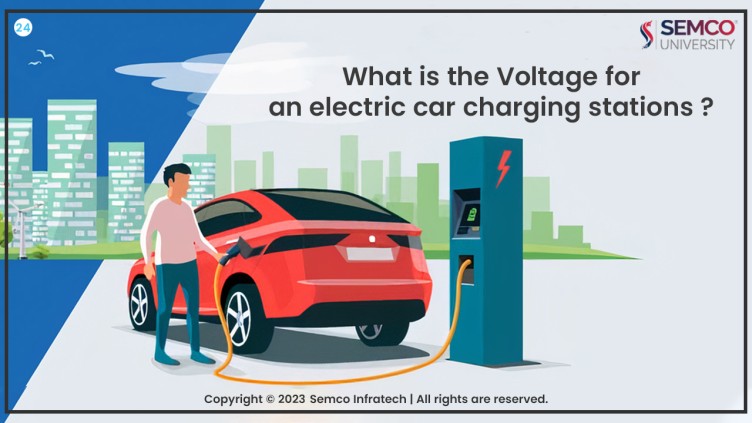Electric vehicles are becoming increasingly popular as people are becoming more conscious about the environment and the need to reduce carbon emissions. To keep up with this trend, many cities and businesses are investing in electric vehicle charging stations. However, not all charging stations have the same voltage, and it can be confusing to know which voltage is best for your electric vehicle. In this article, we will explore the different voltage levels for electric car charging stations.

Level 1 Charging
Level 1 charging is the slowest form of charging and is done through a standard household 120V outlet. This type of charging is typically used at home and is the easiest way to charge your electric vehicle. However, it is the slowest form of charging, and it can take up to 20 hours to fully charge an electric vehicle.
Level 2 Charging
Level 2 charging is the most common form of electric car charging used in public and commercial settings. It uses a 240V outlet, which is the same outlet used for large household appliances like dryers or ovens. Level 2 charging is significantly faster than Level 1 charging and can fully charge an electric vehicle in 4-6 hours.
DC Fast Charging
DC Fast Charging is the fastest form of charging and can charge an electric vehicle up to 80% in just 30 minutes. DC Fast Charging stations use a high-voltage direct current (DC) power source to charge an electric vehicle’s battery quickly. DC Fast Charging is typically found along highways or in commercial areas where people need a quick charge to continue their journey.
The Voltage for Electric Car Charging Stations
Electric car charging stations can have different voltage levels, depending on the type of charging. Level 1 charging uses a standard household outlet and a 120V AC source. Level 2 charging uses a 240V AC source, which is typically the same outlet used for large household appliances like dryers or ovens. DC Fast Charging stations use a high-voltage DC source, which can range from 200V to 600V or more.
The voltage level of the charging station determines the charging speed of your electric vehicle. Higher voltage levels can charge your electric vehicle faster, but they also require a more powerful electrical infrastructure to handle the load. Lower voltage levels, on the other hand, are slower but can be used in a wider range of locations since they require less power.
Conclusion
Electric vehicle charging stations come in different voltage levels, and it is essential to understand which voltage level is best for your electric vehicle. Level 1 charging uses a standard household outlet and a 120V AC source, while Level 2 charging uses a 240V AC source, and DC Fast Charging stations use a high-voltage DC source.
Higher voltage levels can charge your electric vehicle faster, but they also require a more powerful electrical infrastructure to handle the load. Ultimately, the choice of which type of charging station to use depends on your needs, your electric vehicle’s charging capacity, and the availability of charging stations in your area. With the increasing adoption of electric vehicles, we can expect to see more charging stations of different voltage levels in the future.
About Semco – Semco University is an educational website that is catering to the needs of students and researchers. Offering information on Lithium-ion batteries. The resources and content are compiled from various sources including manufacturers, test labs, crowdsourcing, etc. Our motto is to provide a viable resource for companies, students, and enthusiasts interested in participating in the Li-ion Battery industry. Our initiative is to make people aware of the benefits, and opportunities of the revolutionary Lithium Batteries for multiple applications.
For More Updates Follow Us
WhatsApp – Facebook – Instagram – Twitter – LinkedIn – YouTube

